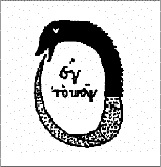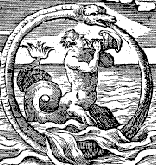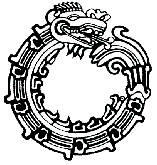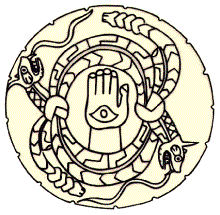2012: The Year of the Dragon
scarce reached by gods, the years’ rough haggard mother,
stands a primeval Cave in whose vast breast,
is Time’s cradle and womb. A Serpent encloses,
the Cave, consuming all things with slow power,
and green scales always glinting. Its mouth devours,
the backbent tail as with mute motion it traces,
its beginning. At the entrance Nature sits,
the threshold-guardian, aged and yet lovely,
and round her gather and flit on every side Spirits.
A Venerable Man writes down immutable laws.
He fixes the number of stars in every constellation,
makes some of them move and others hang at rest.
So all things live or die by predetermined laws…
When the Sun rested on the cave’s wide threshold,
Nature ran in her might to meet him; the Old Man bent
grey hairs to the proud rays.
[1]
Claudian (c. 370-408), Roman poet
Of all the world’s monsters, the dragon appears to be the most universal. Dragons appear in the early literature of the English, German, Irish, Danish, Norse, Romans, Greeks, Babylonians, and Egyptians – and in oral tales from every inhabited corner of the globe.
The word “dragon” is derived from the Latin dracon, which came from the Greek word for serpent, spakov. Spakov can be traced to the Greek aorist verb, spakelv meaning “sharp-sighted one” (a reference to the perceived good vision of snakes), and is related to many other ancient words to do with sight, such as darc (Sanskrit for see), derc (Old Irish for eye), torht (Old Saxon) and zoraht (Old High German) which both mean clear, or bright.
The distinctions between words that describe dragons and snakes are often blurred, and are to some degree interchangeable. The old German word for dragon, “lindwurm”, literally means “snake-worm” The ancient Anglo-Saxon word “wyrm” has been translated as meaning any of “dragon,” “serpent,” or “worm”. An English folktale which dates back to the early fifteenth century tells of Sir John Lambton battling “the Worm.” The original story makes no mention of this “worm” having legs. Early pictorial representations of dragons were almost always shown as large snakes, but from the sixteenth century onward images associated with the Lambton story are of four-legged dragons. We must consider ancient dragons to be more like giant serpents, and less like the more modern fantasy images that we know so well from role-playing games and books like The Hobbit.
The Bible interchanges the words dragon and serpent liberally.
“When the dragon saw that he had been hurled to the earth, he pursued the woman who had given birth to the male child.”
“Then from his mouth the serpent spewed water like a river, to overtake the woman and sweep her away with the torrent. But the earth helped the woman by opening its mouth and swallowing the river that the dragon had spewed out of his mouth.”
(Revelation 12:7)
[ A good Biblical description of a dragon can be found at Job 41 ]
|
The themes of chaos and disaster are often linked to dragon lore, as well as the processes of fertility and re-birth, and the revolutions of the cosmos. |
Ouroboros
Dragons or serpents having importance in the cosmos are
present in most ancient cultures. Also common is the image of a serpent swallowing its own tail. It is commonly known as the Ouroborus/ Uroboros.
|
|
Graeco-Byzantine The image is from The Chrysopoeia of Cleopatra – an alchemical tome. The words in the centre mean “the all is one“. The dark and light halves represent the same opposing principles as the Chinese yin and yang. |
|
|
Greek Old Sages by the Figure of the Snake |
|
|
Aztec ( image of unknown source) |
|
|
North American Indians A ceremonial disk found at Moundville, Alabama, USA (diameter 12.5 inches) [curious about the eye in the hand? Visit http://www.darkfiber.com/eyeinhand/ – a very large single page] |
The Ouroborus was known as far back as the twenty-first dynasty in Egypt, on the papyrus of Dama Heroub. It shows up in alchemical texts such as Chrysopoeia and Codex Marcianus, and the Greeks used it to symbolise the universe. It represents the revolutions of the cosmos, an eternal cycle of destruction and renewal. It shows catastrophism and the re-emergence of life at its most basic.
[1] Claudian, full name Claudius Claudianus (c. 370-408), Roman poet. This passage ends the second book of his poem, On the Consulship of Stilicho
[2] George Wither’s A Collection of Emblemes, Ancient and Moderne (London, 1635)





